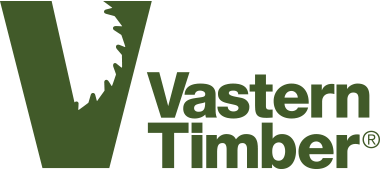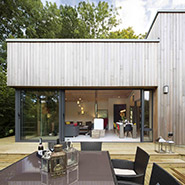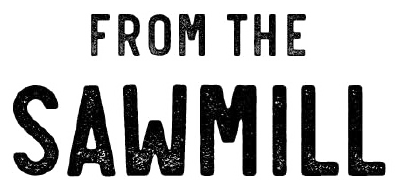Comparing British and Siberian larch cladding
We’re often asked about the differences and similarities between British Larch and Siberian Larch cladding, so we made a short video comparing the two.
Watch the video: Comparing British and Siberian Larch Cladding, or read the transcription below.
To find out more about Larch Cladding, visit our page about British Larch cladding and Siberian Larch cladding. Cladding.https://www.vastern.co.uk/cladding/larch-cladding/
We are often asked about the difference between British grown and Siberian grown larch. The European larch tree, that grows across Northern Europe and in this country is distinctly different to the Siberian larch which is a specie in itself. When specifying larch for your project, it is really important that you know which of these larches you’re planning on using because they look distinctly different and getting them confused can lead to costly mistakes.
In terms of the appearance British grown larch is a consistent pale pink colour and includes regular dark knotts. Siberian larch on the other hand is a pale straw colour, more akin to that of pine and the knots tend to be grey in colour. In terms of the availability Siberian larch comes into the country pre-dried and pre-cut to section, they tend to be fairly standard sections, such as 25 x 150 for cladding. Siberian larch is normally sold as a profile, such as this, or something similar like a TGV or shiplap.
With the British larch because we cut this in our own sawmills for fresh sawn or wet sizes we can cut pretty much any dimension that’s available from the tree. For the boards that we dry, again we tend to dry these in the same standard sizes as the Siberian larch.
In terms of stability both types of larch are relatively unstable when compared to the likes of Cedar, which means that during the year they will move a bit more, they will shrink and expand a bit more, possibly cup and the surface might check a bit – you might get some little splits. But the timber is much harder, much tougher than Cedar, so in certain applications is works well.
As far as the durability goes both types of larch are classed as moderately durable, which according to the data means you should get a service life of at least 15 years, but anecdotal evidence shows that you should get nearer 30 or more than 30.
In terms of the grading Siberian larch tends to come into the country in two grades, one is either called fourths or saw falling, which is this relatively knotty grade. The other grade which is called unsorted, in a slightly confusing manner, is a cleaner grade with far fewer knots.
For simplicity we use just the grades grade A and grade B for both types of larch, so grade A is the less knotty grade and grade B is the more knotty grade.
In terms of cost both British and Siberian larch are at the cheaper end of the spectrum for better cladding timbers, but British grown does tend to be slightly cheaper than Siberian and especially if you’re using some of the quite rustic fresh-sawn products such as waney-edge or feather-edge. These are the cheapest cladding products we sell.
So in summary Siberian larch is pale straw colour, included regular grey knots and it’s sold pre-dried in a limited range of sections normally to a machined profile. British grown larch is pale pink, includes regular dark knots and is available either as fresh sawn products, waney-edge or feather-edge or dried machines profiles again. British grown larch is slightly cheaper than Siberian larch.
Thank you for watching.




